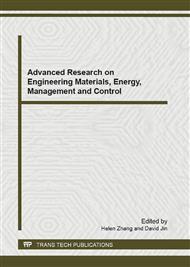p.1282
p.1287
p.1293
p.1297
p.1301
p.1305
p.1309
p.1313
p.1318
The Kinetic Analysis of Biomass Burning Based on Two-Component Reaction Model
Abstract:
Combustion of sawdust was studied using Pyris-1TGA thermogravimetric apparatus in the heating rates of 20, 40, 60K/min. The combustion process of sawdust includes three steps: losing water, precipitation and combustion of volatile, and carburization. A bicomponent parallel reaction model is created and used to simulate the combustion process of sawdust under the heating rate of 40K/min. Comparison of simulation and experimental results shows that the fitting curves are in good agreement with the experimental results
Info:
Periodical:
Pages:
1301-1304
Citation:
Online since:
January 2012
Authors:
Price:
Сopyright:
© 2012 Trans Tech Publications Ltd. All Rights Reserved
Share:
Citation:


